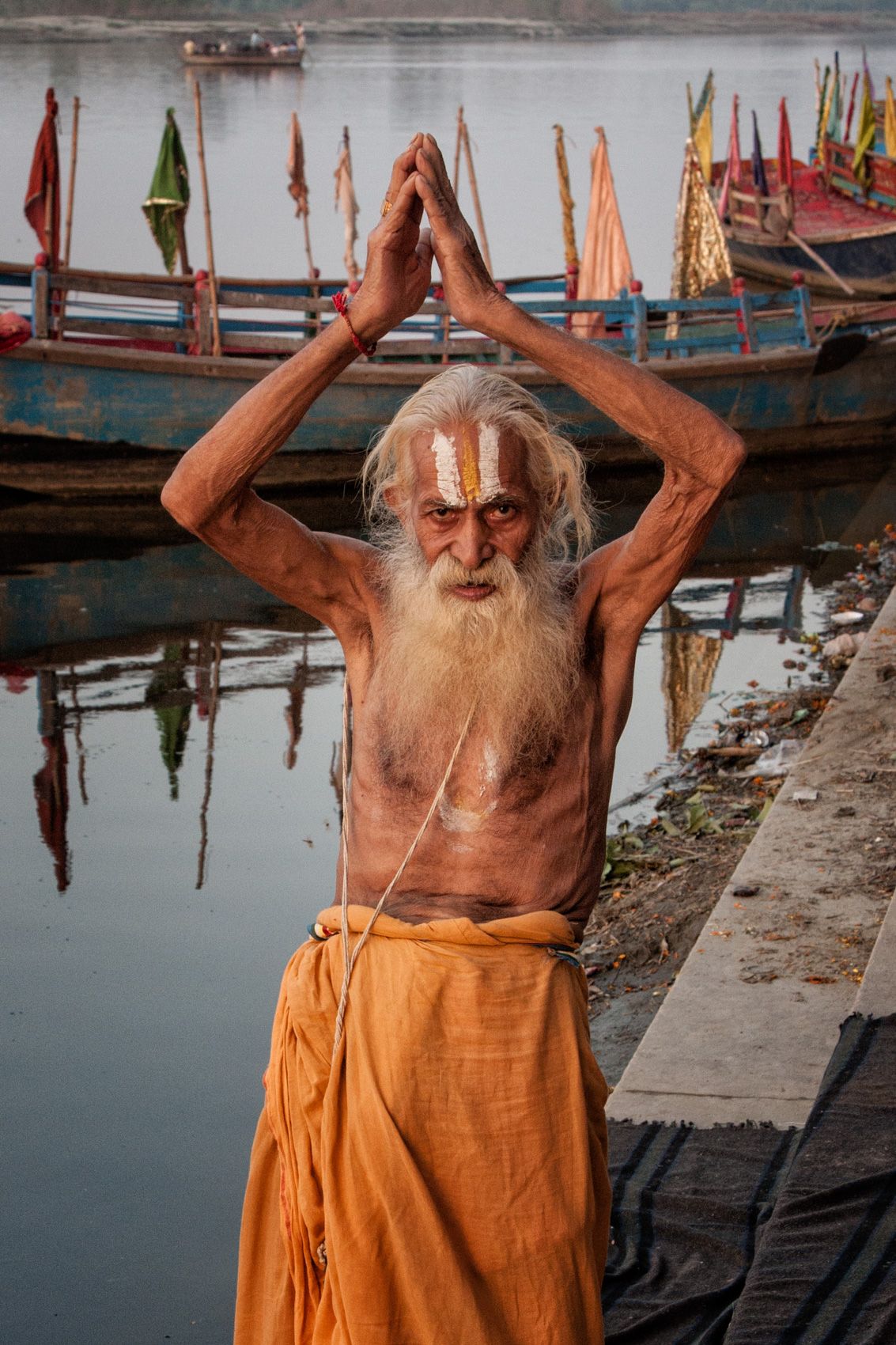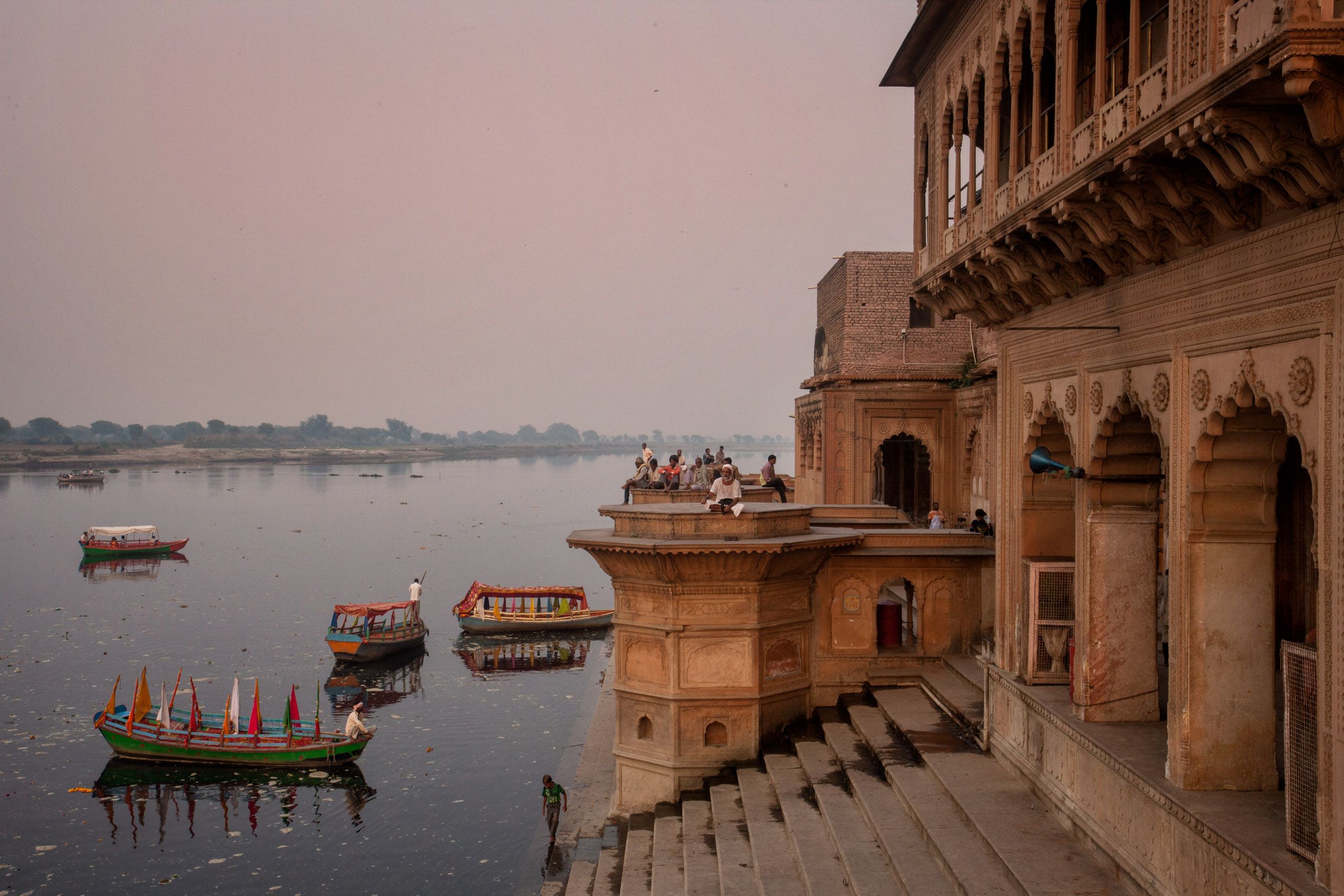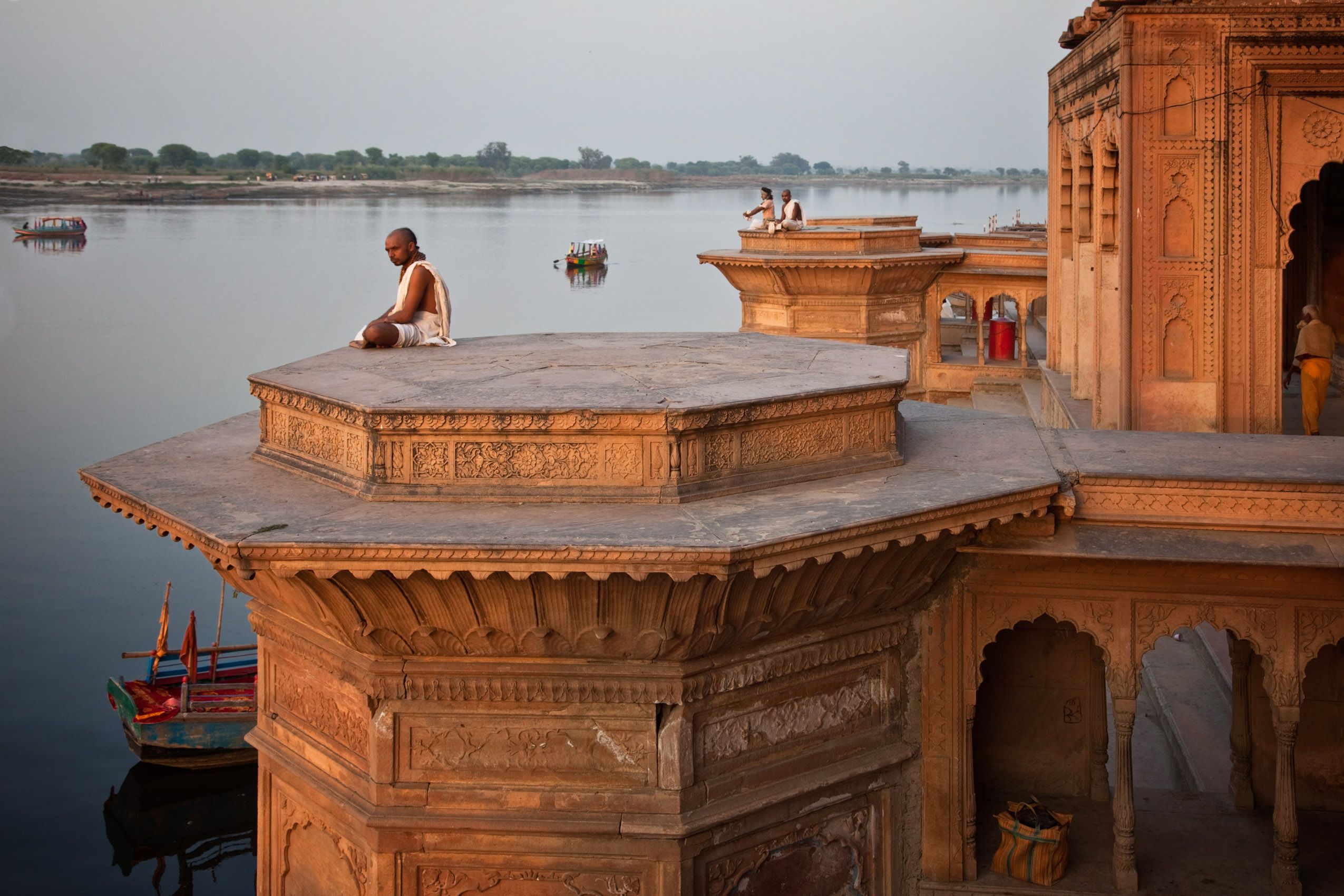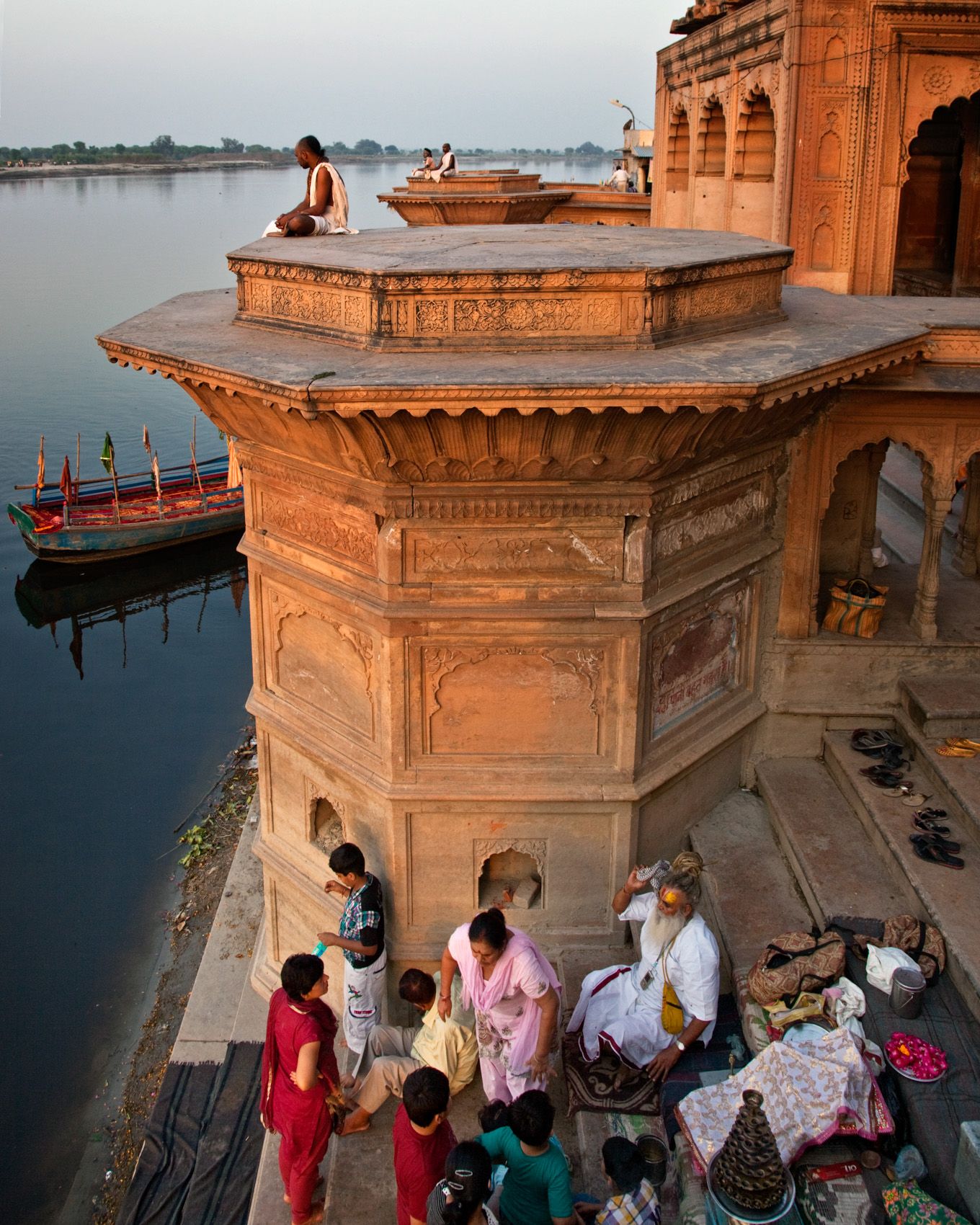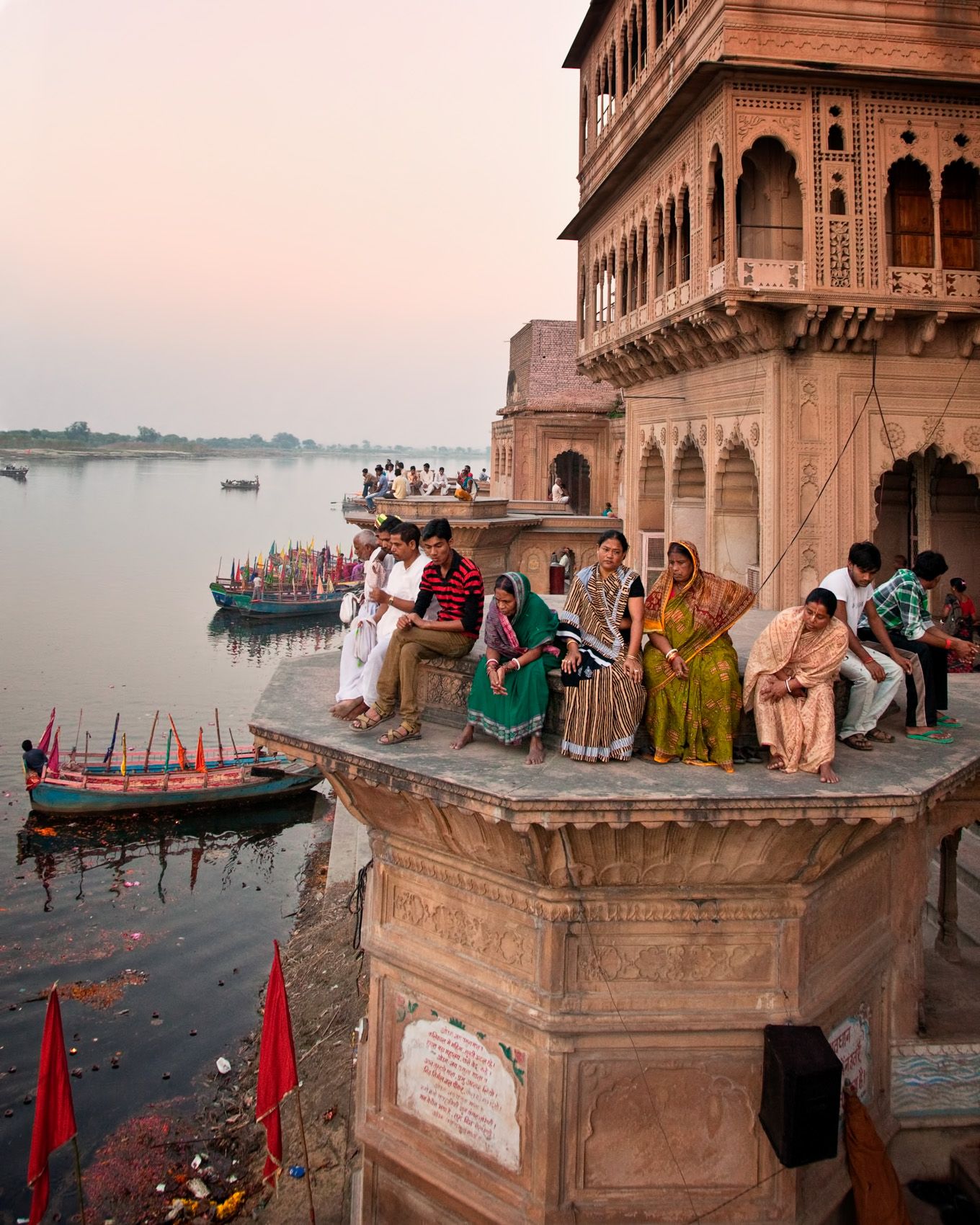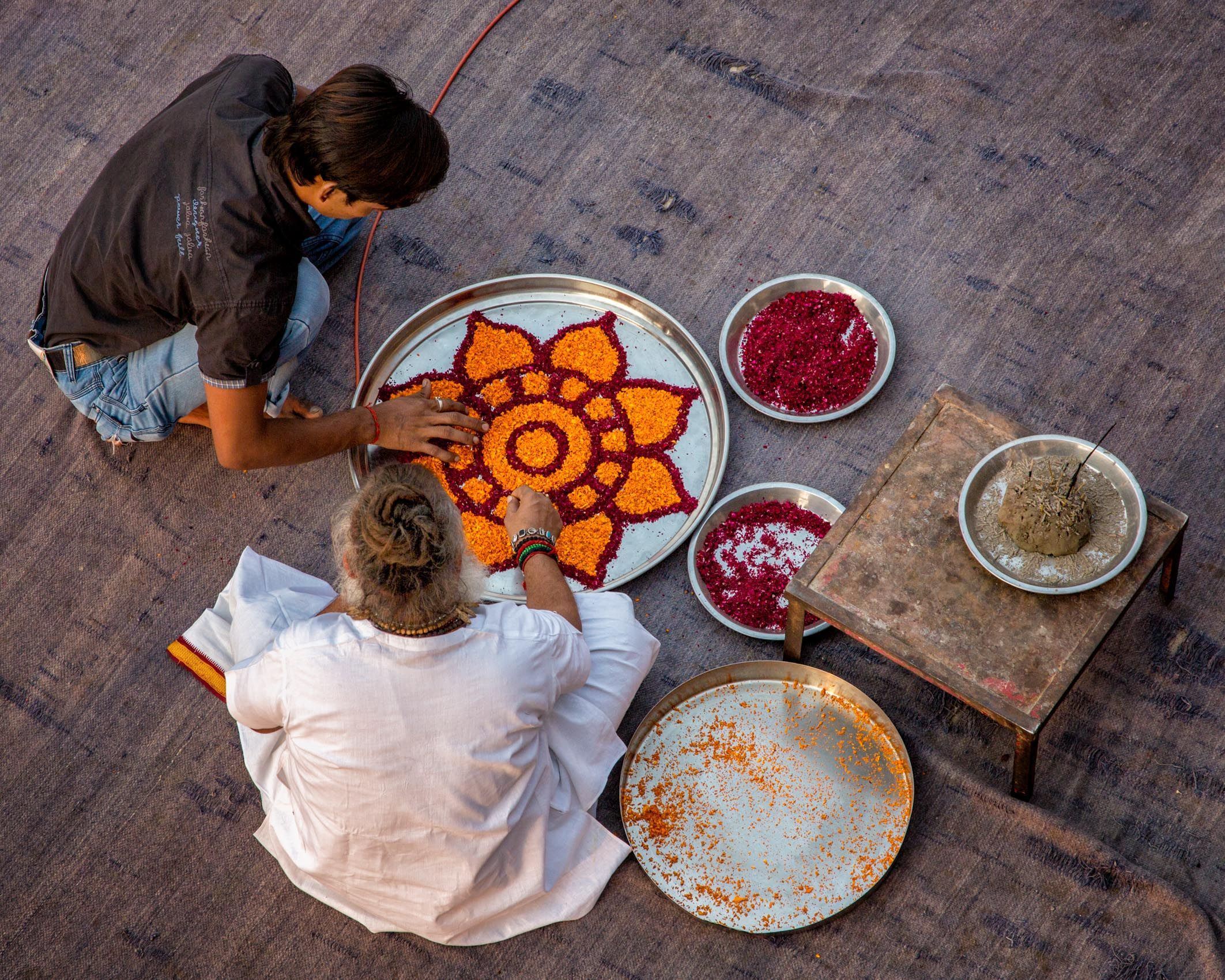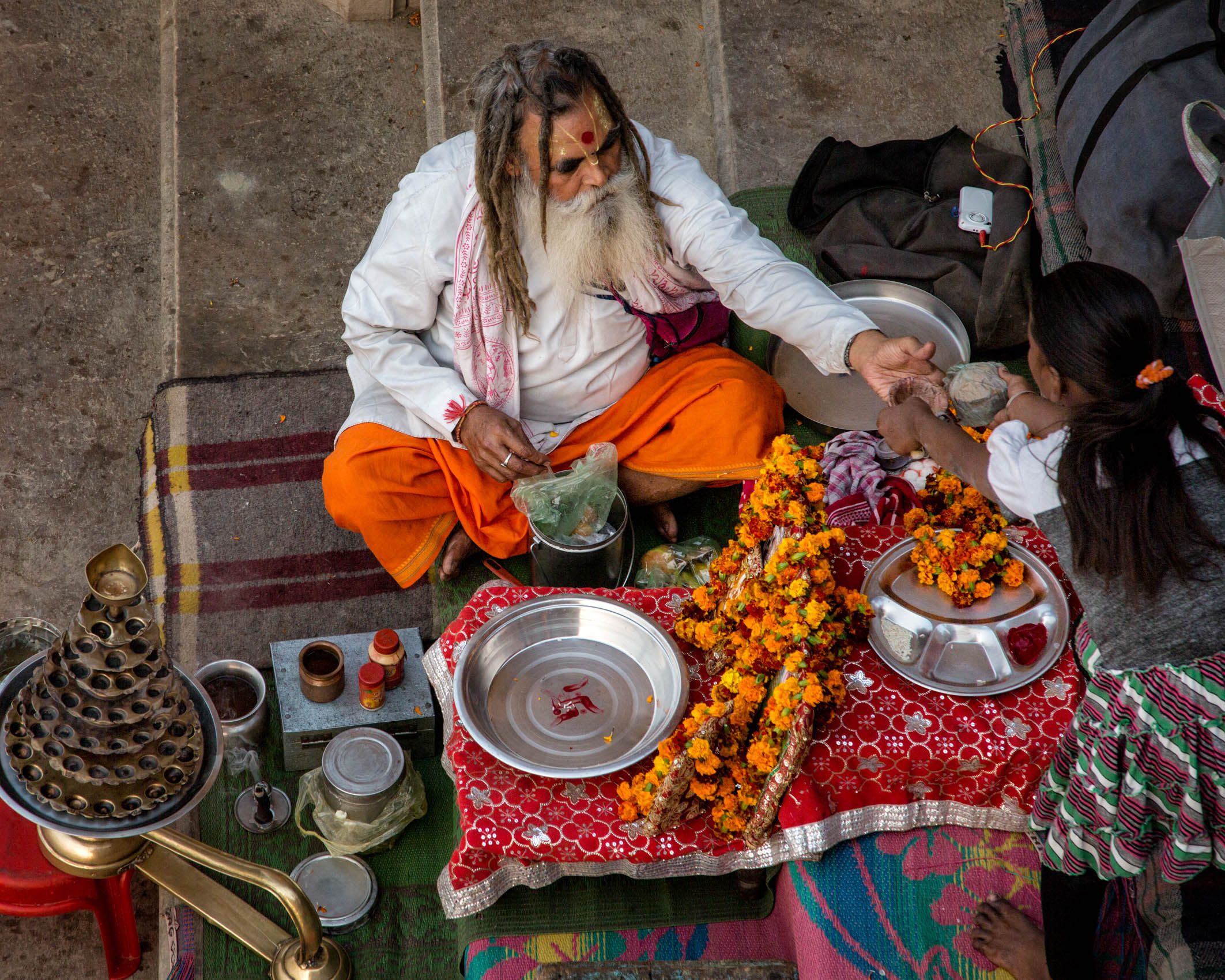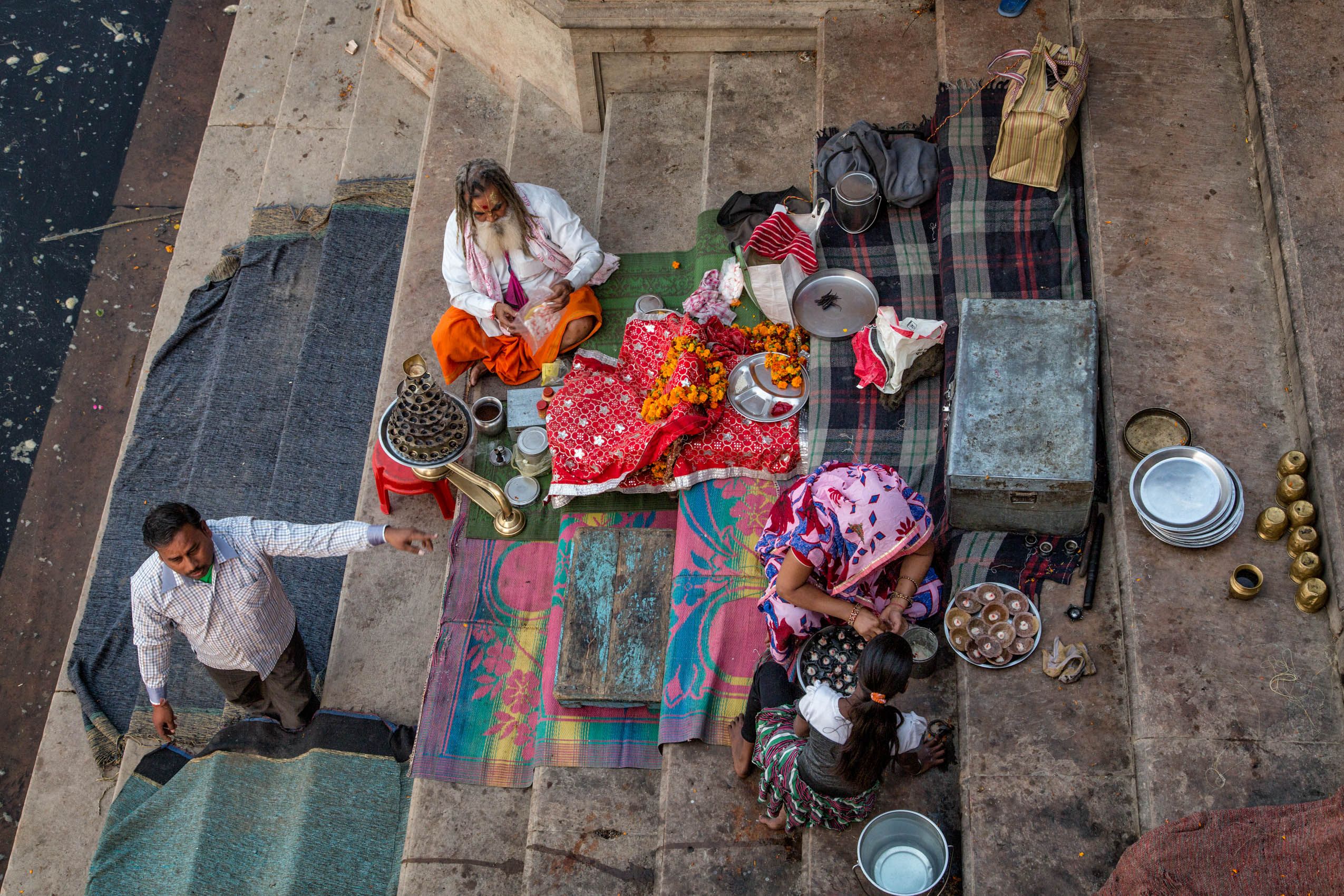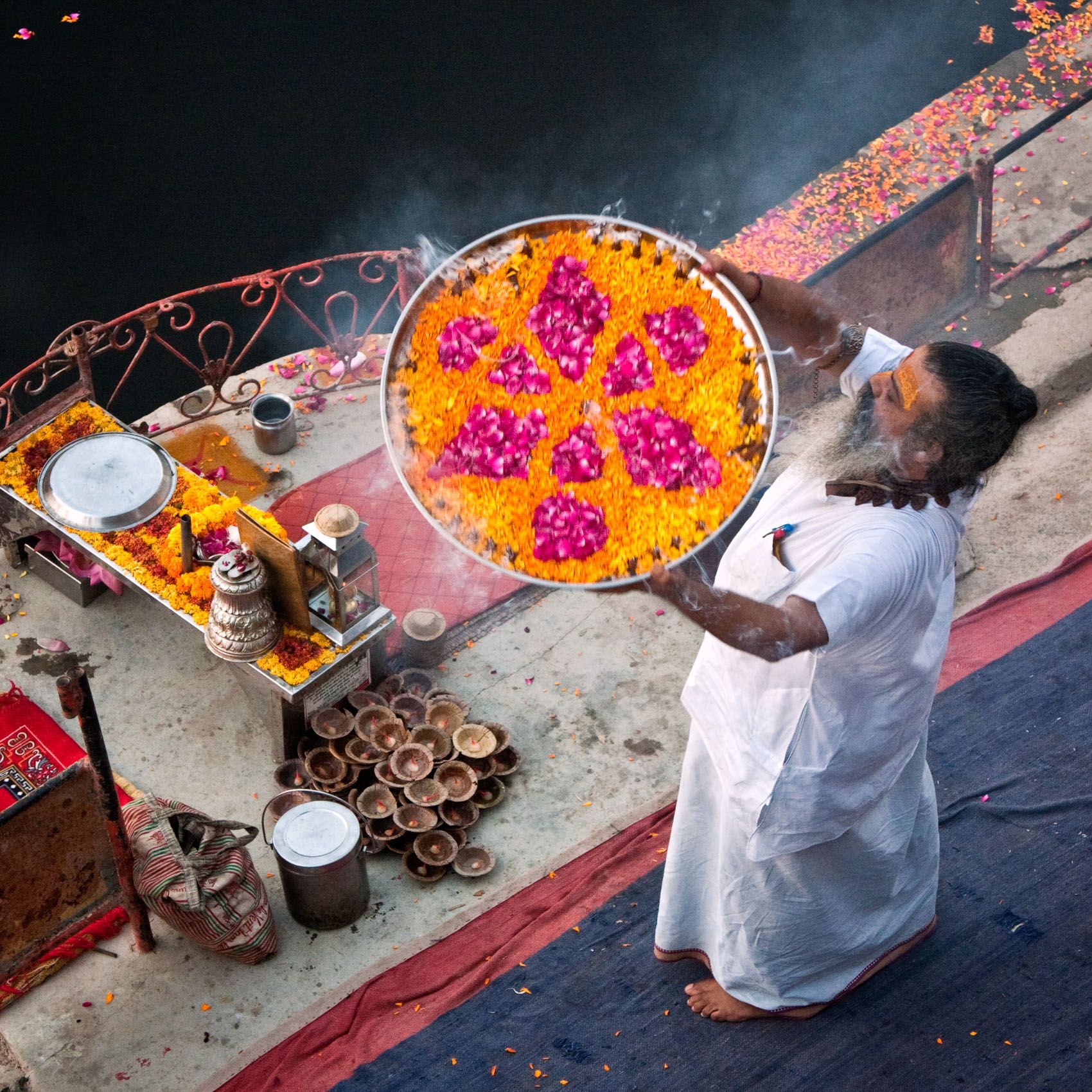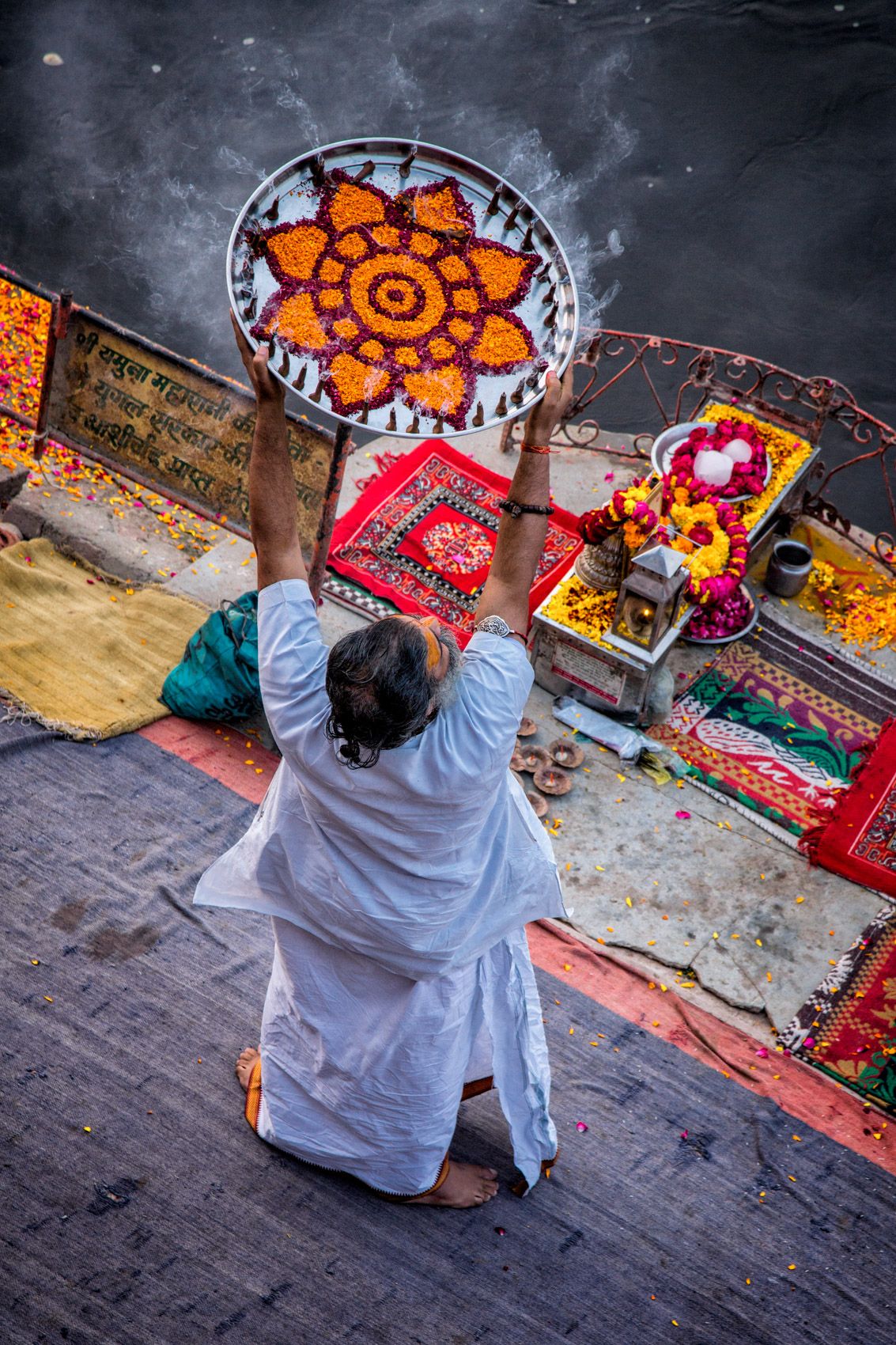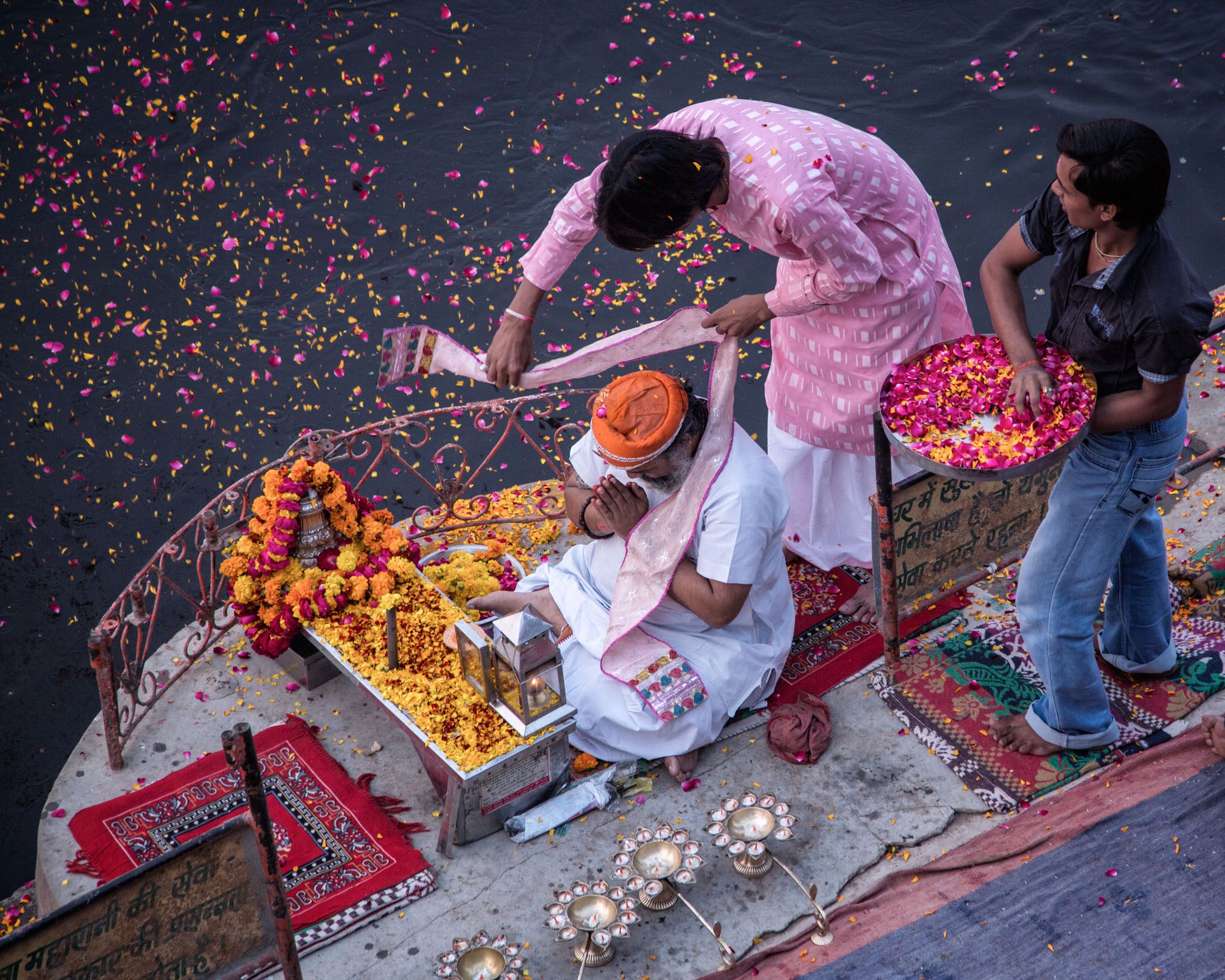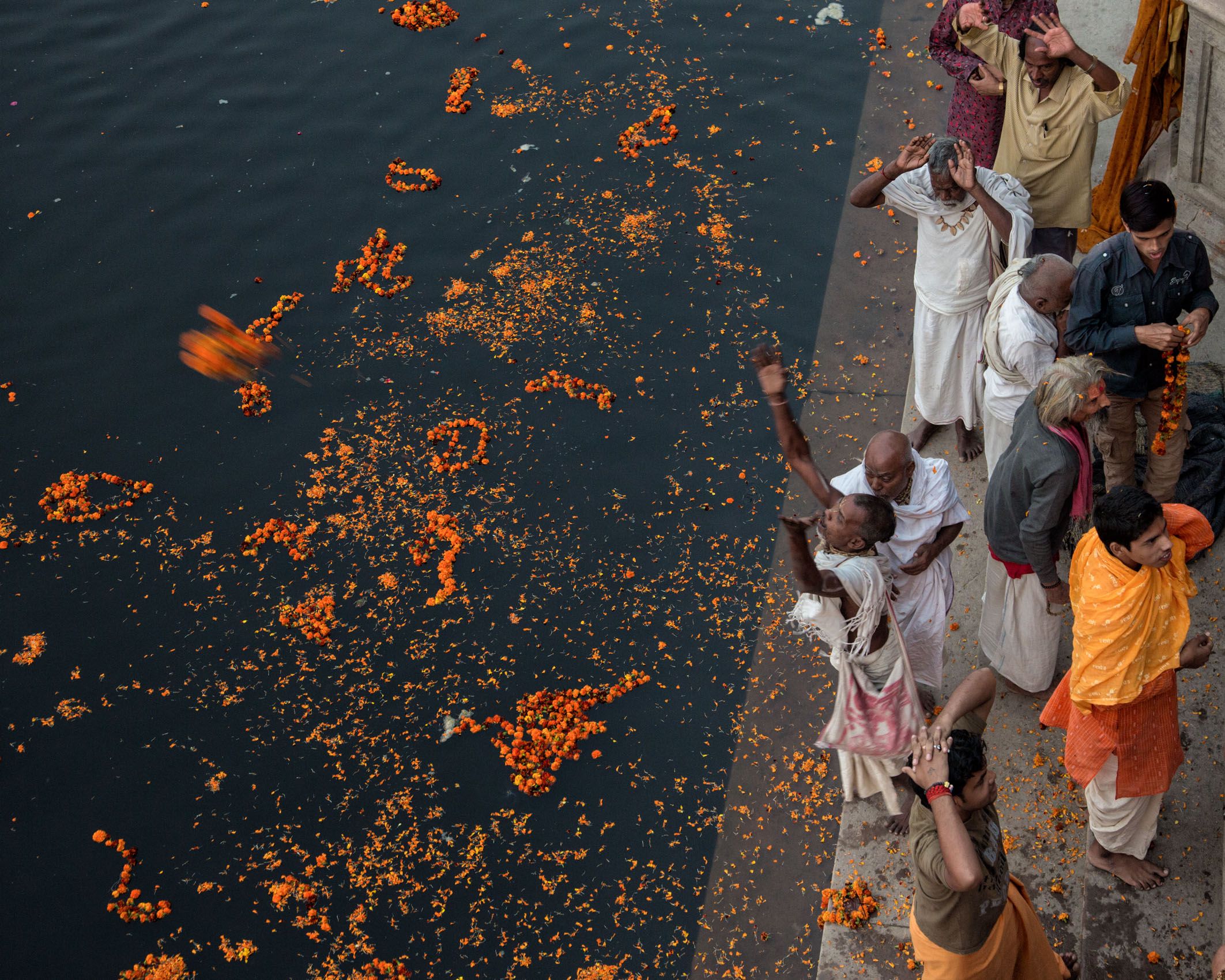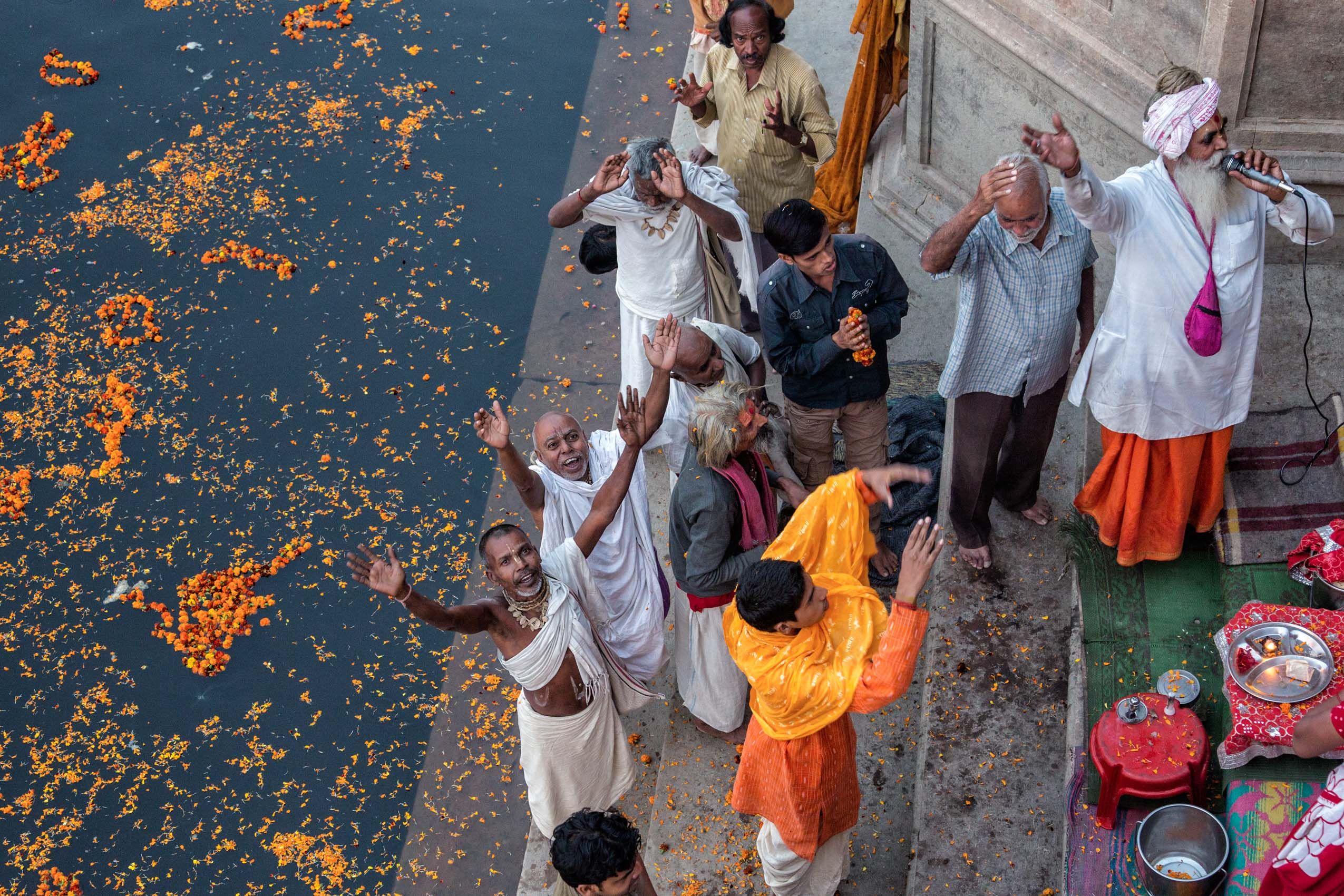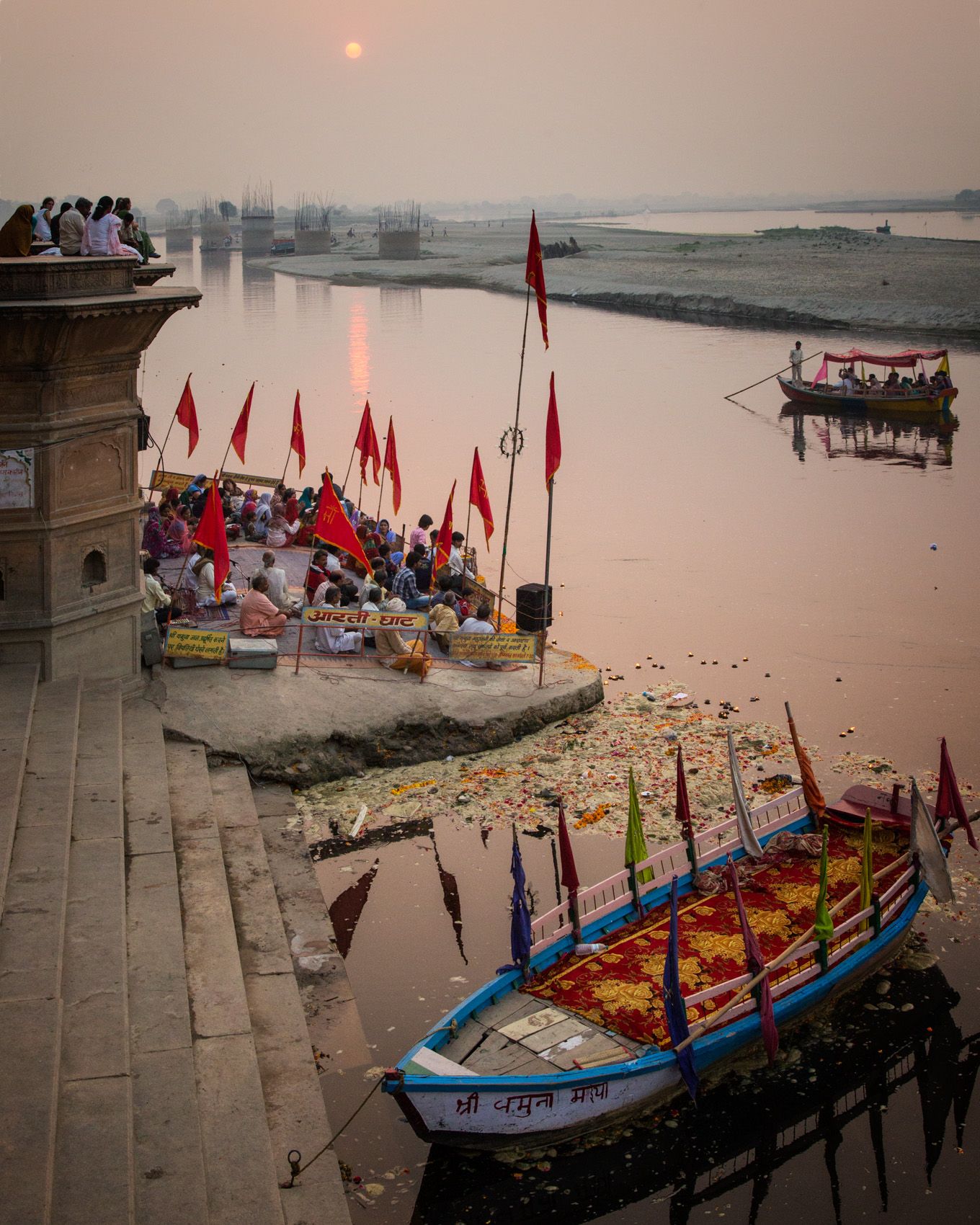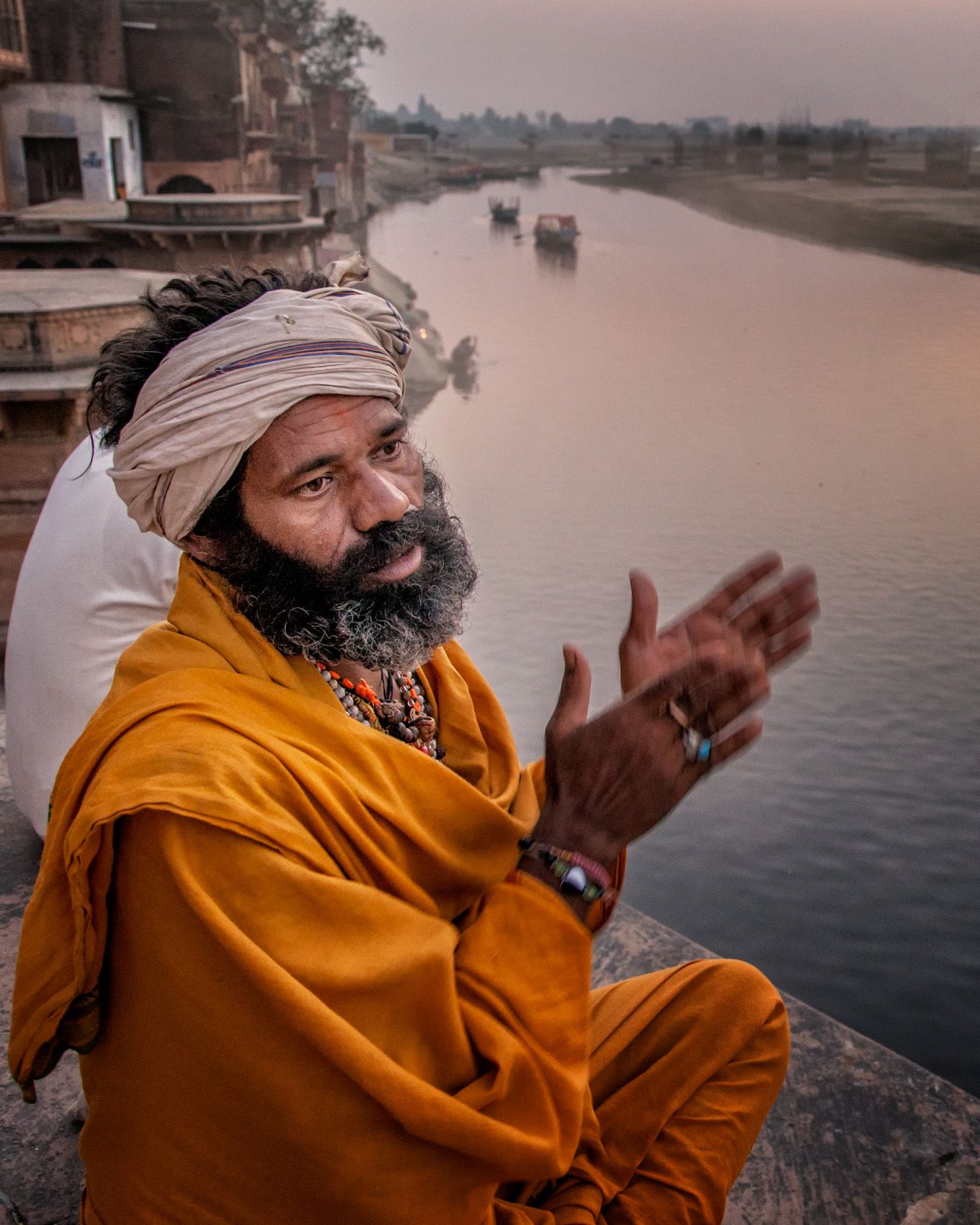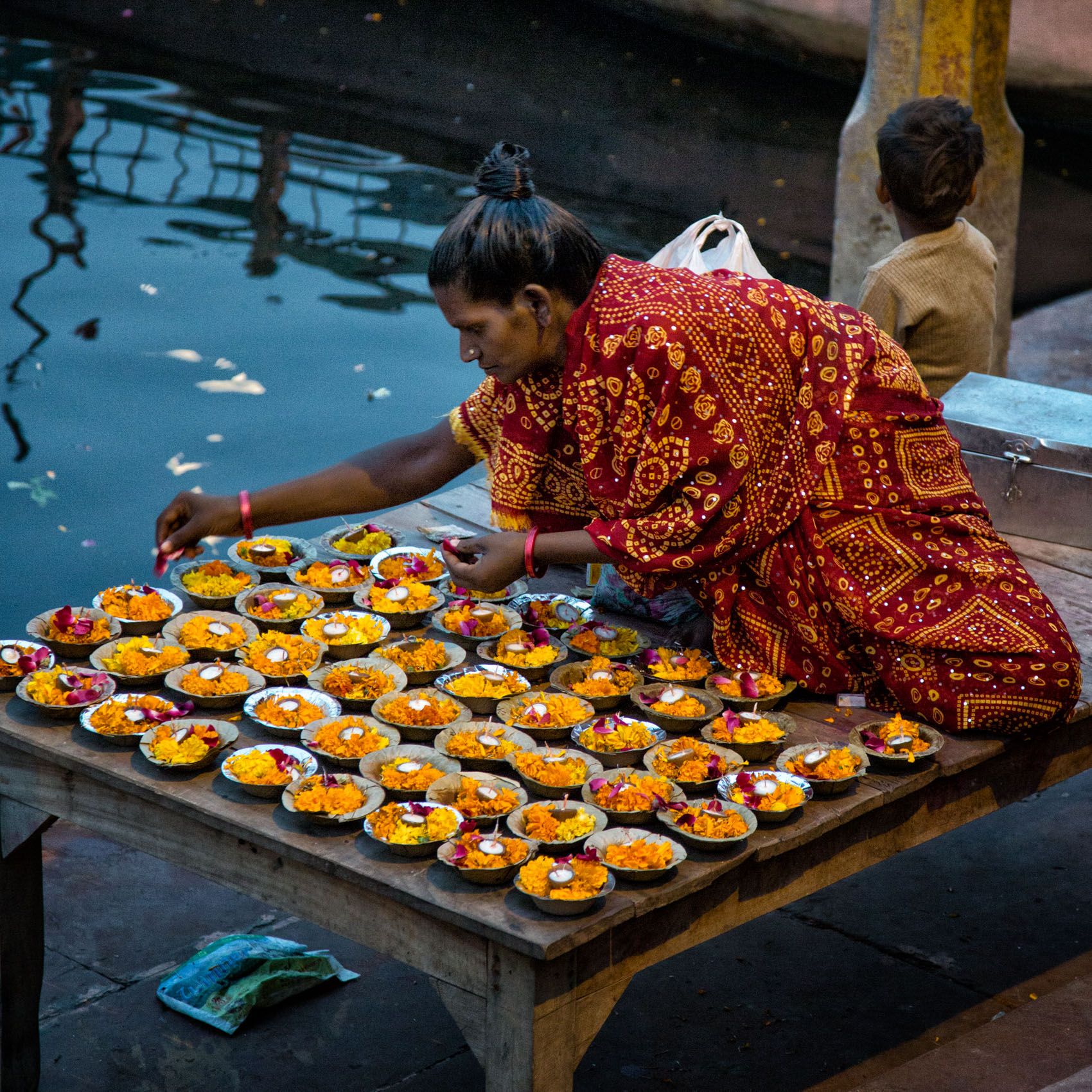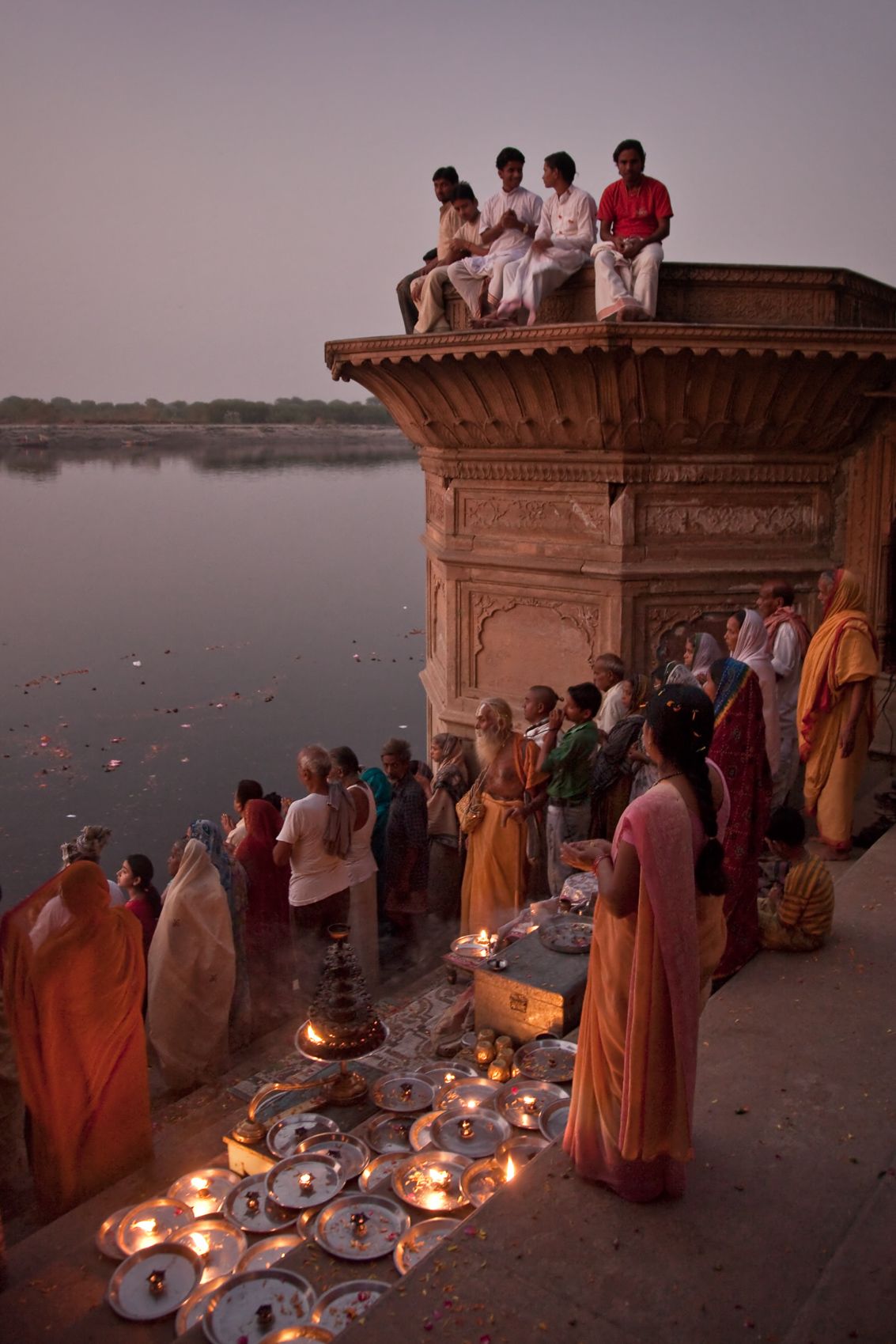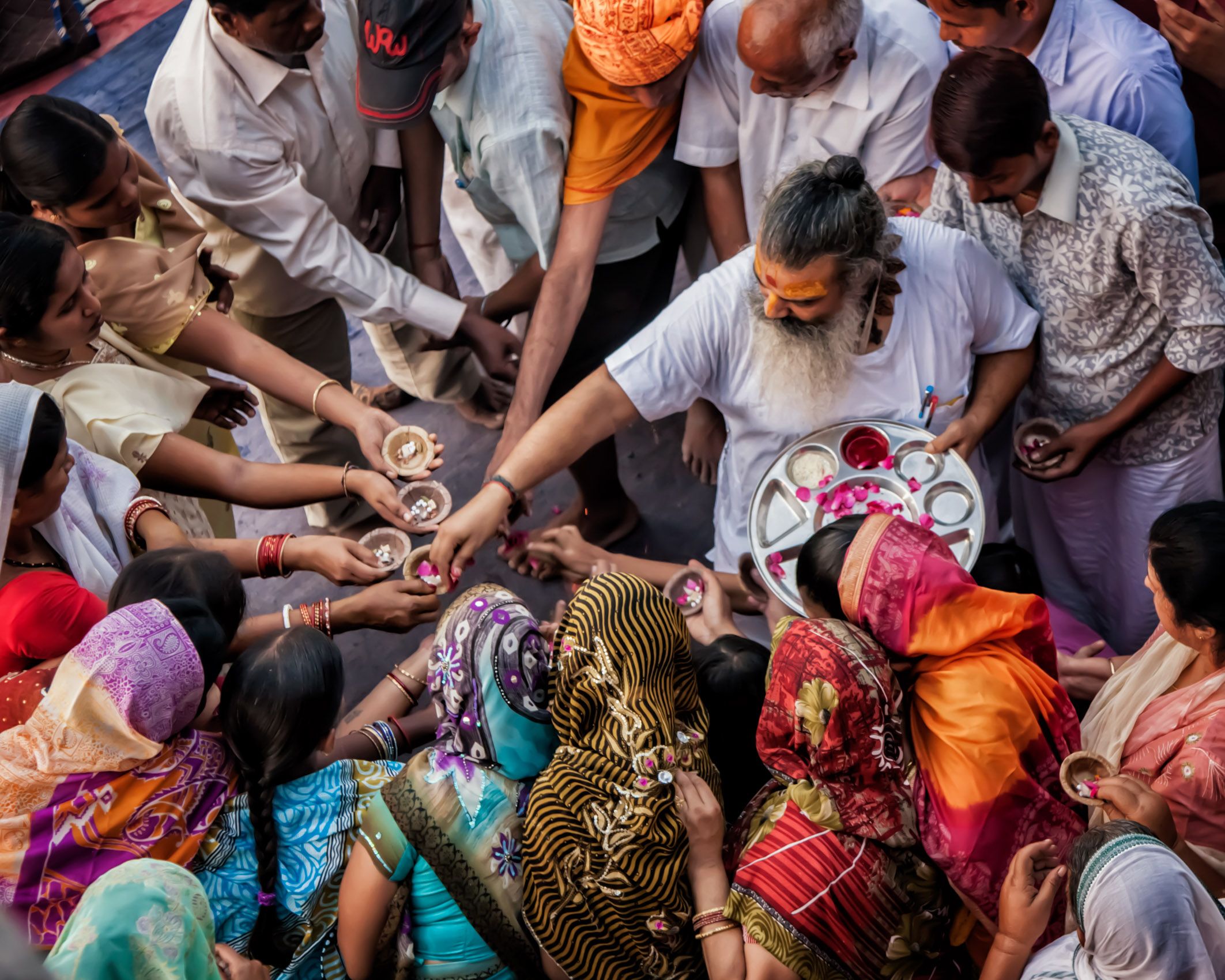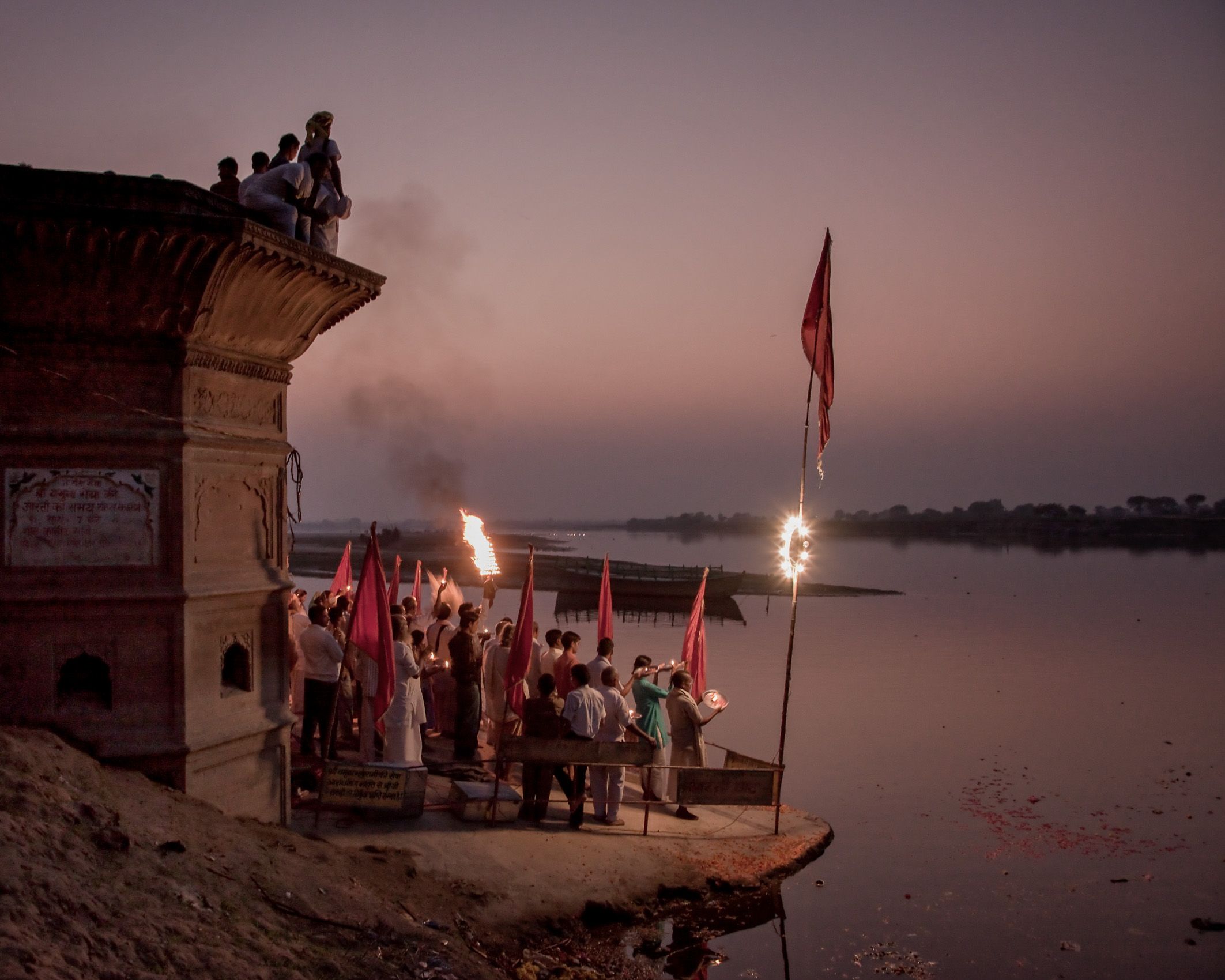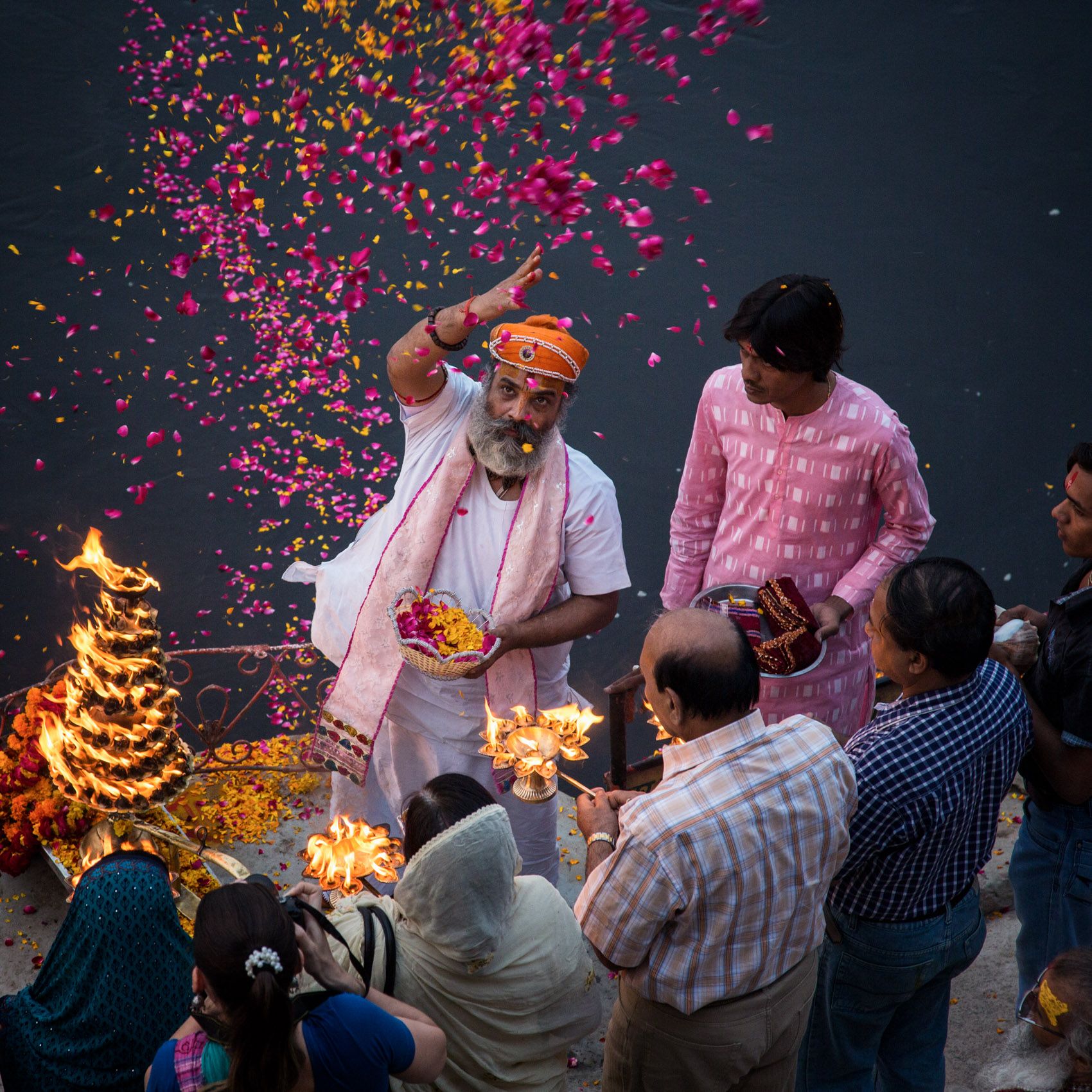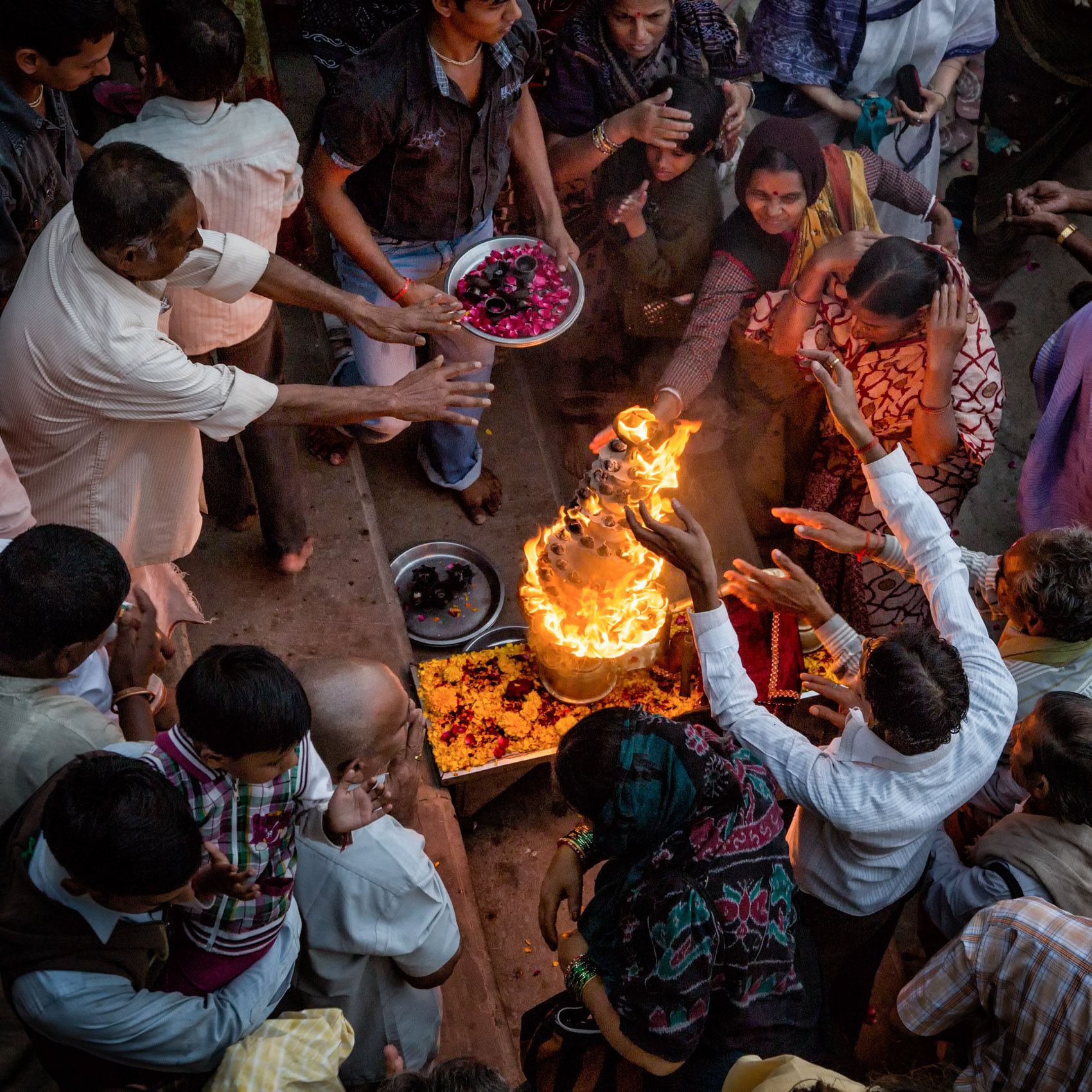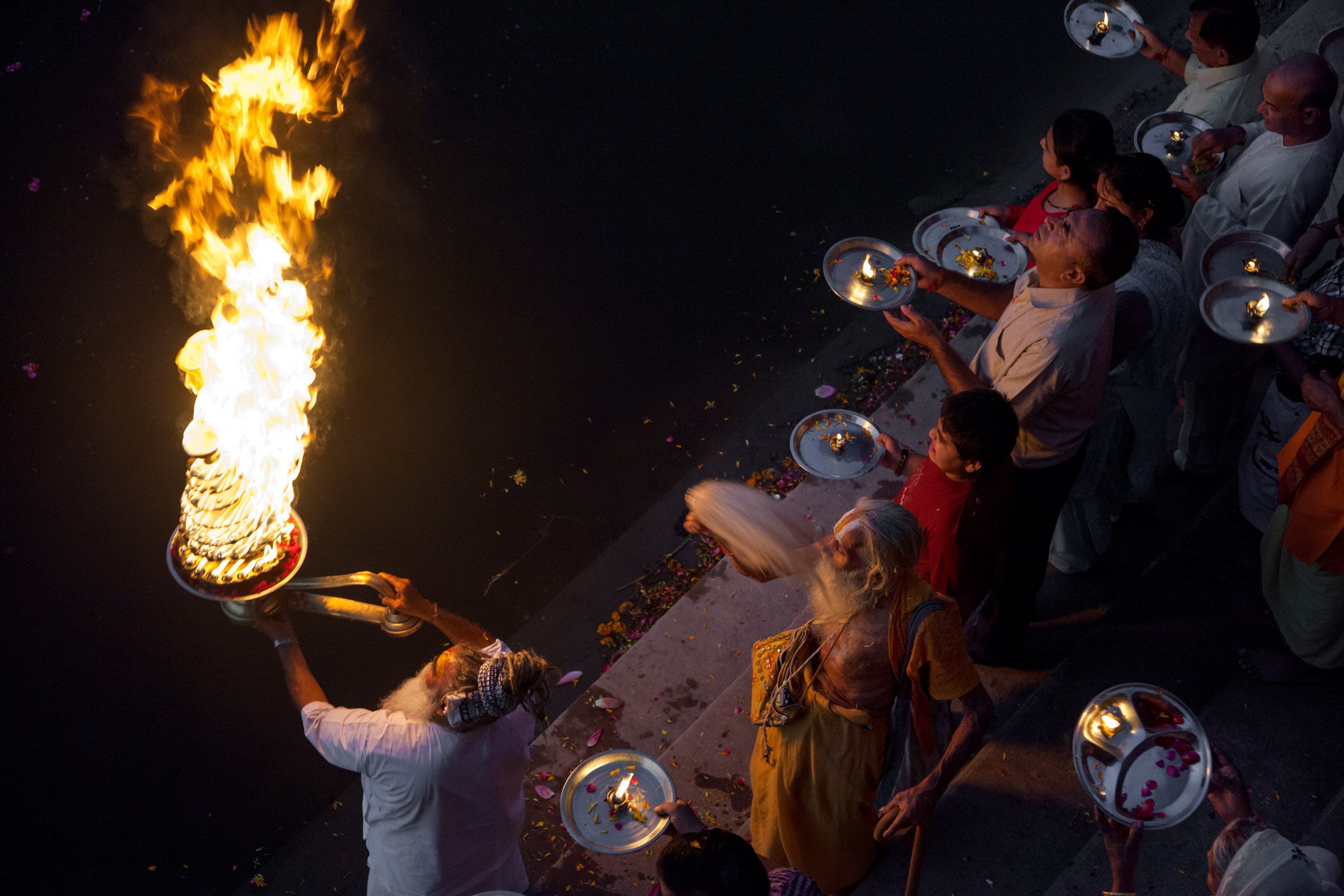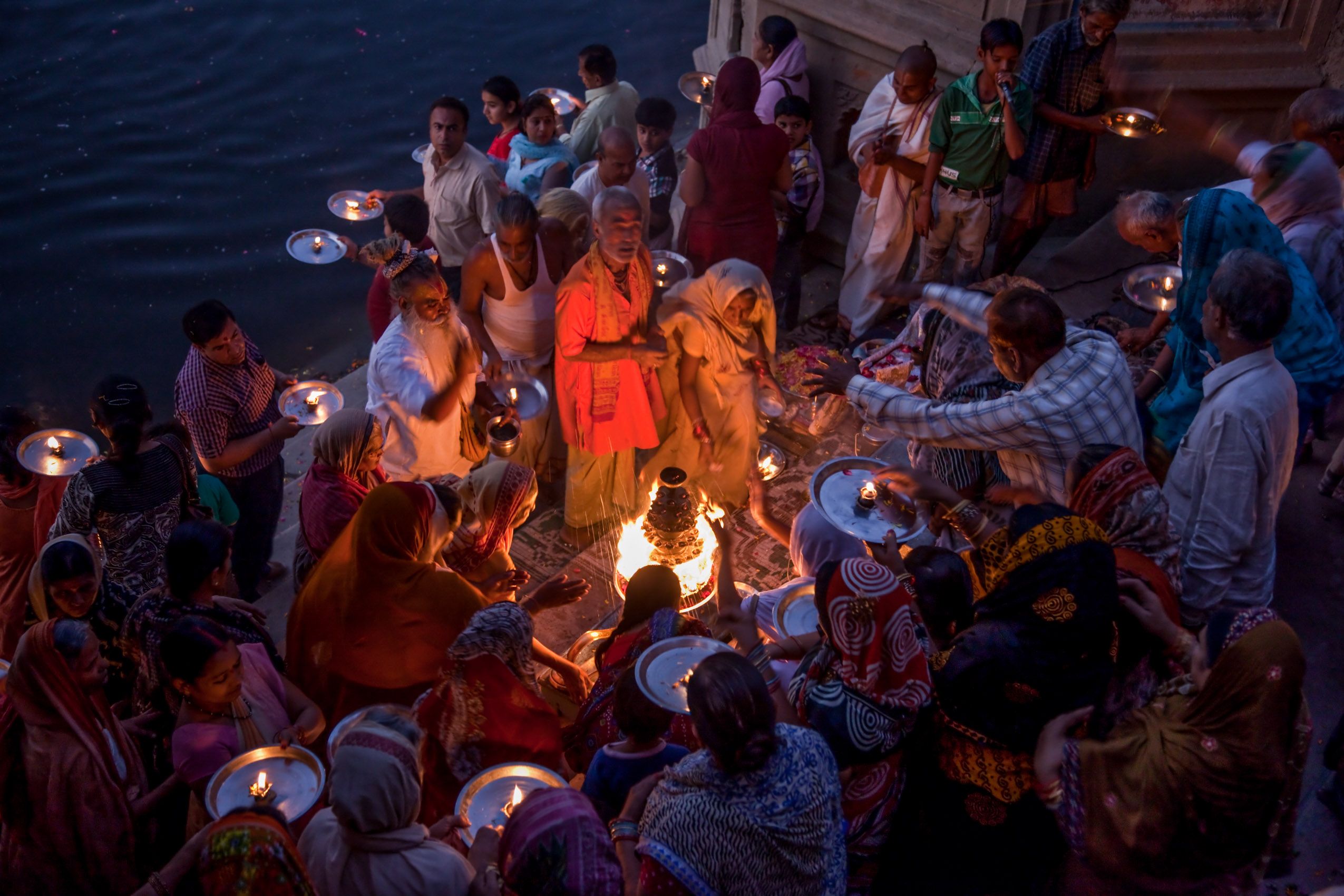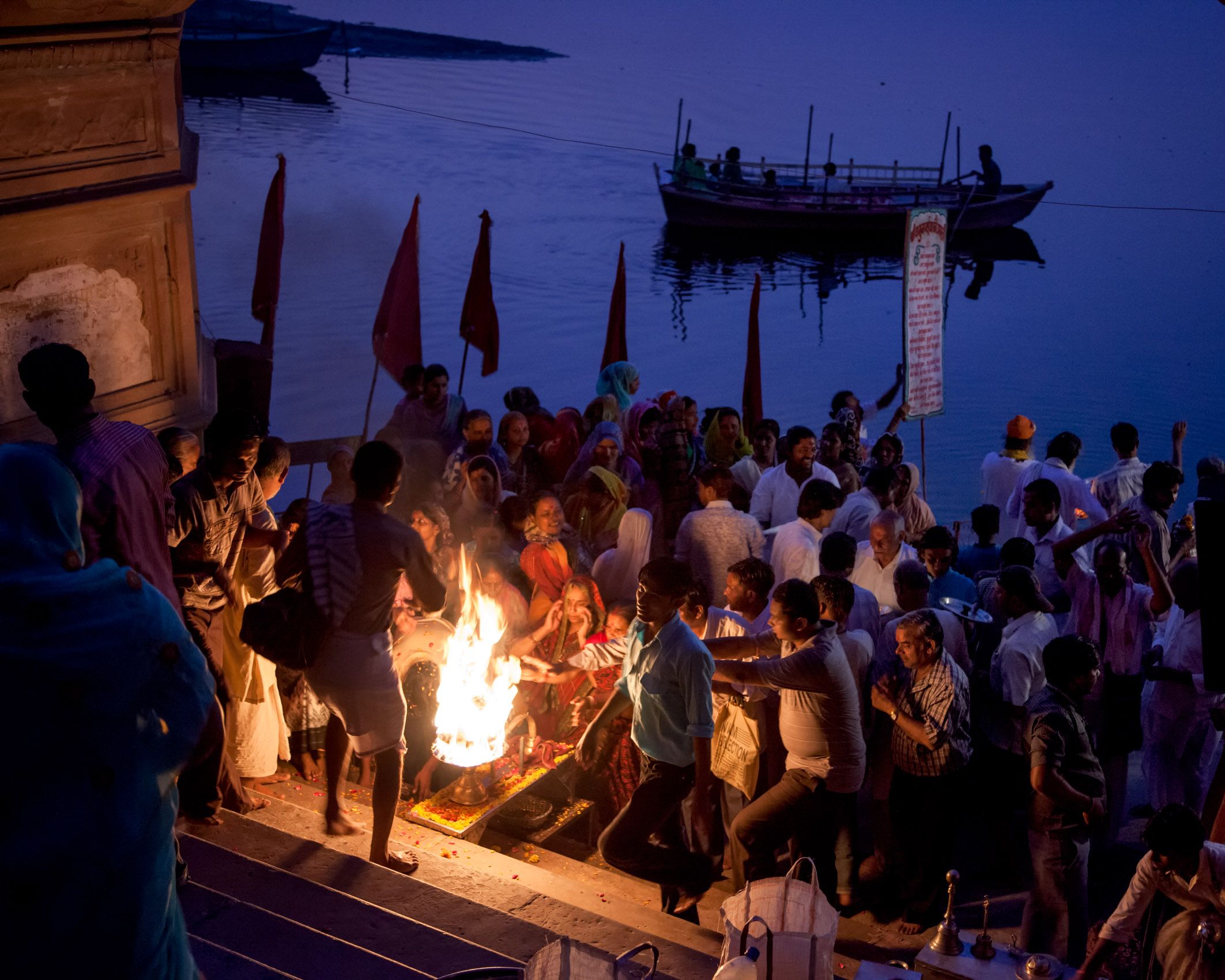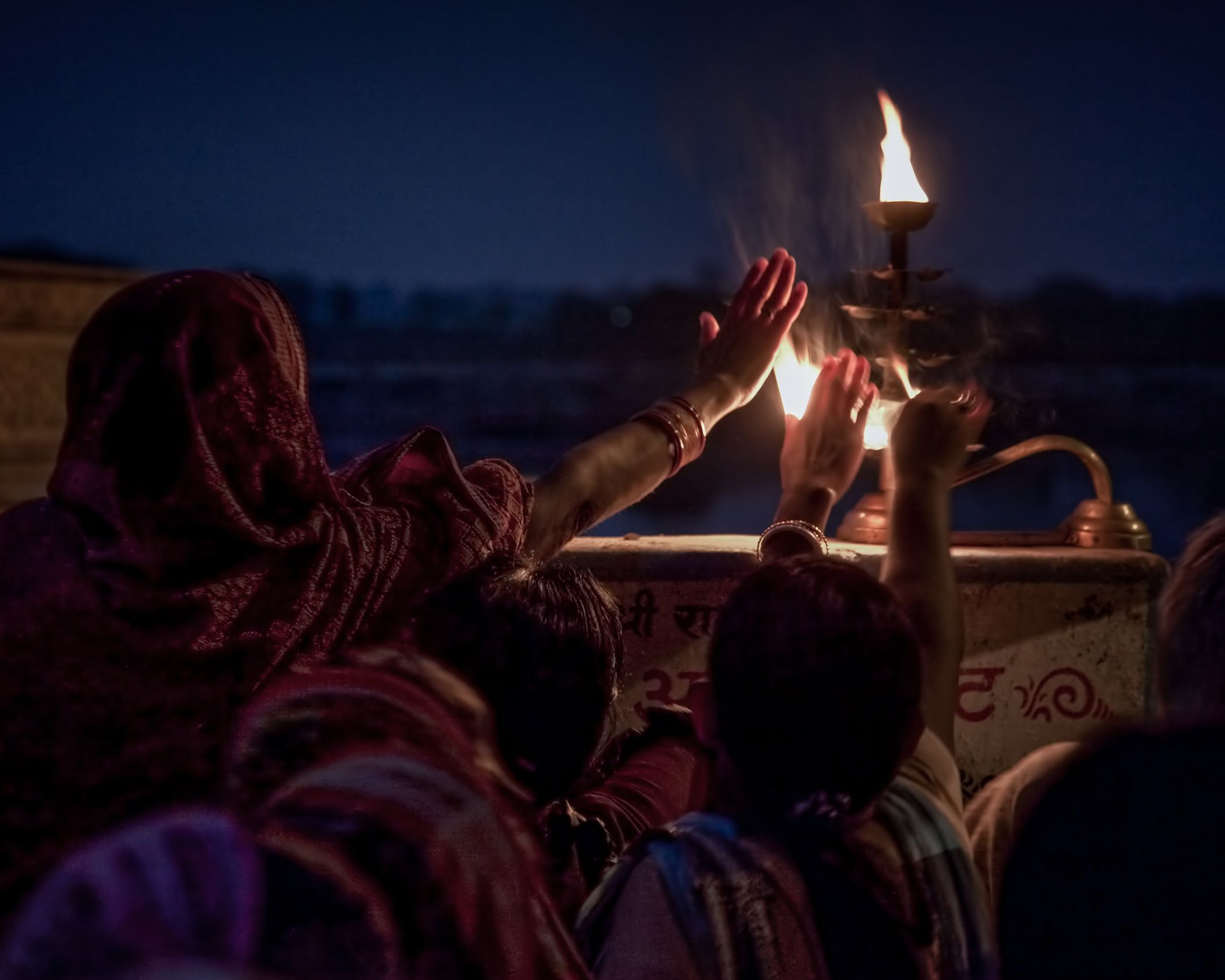Evening Aarti on the Vrindavan Ghats
Aarti or Arati is a sequence of ritual offerings to a Hindu god at prescribed times of day. The aarti documented here takes place daily at dawn and dusk in the north Indian town of Vrindavan and is addressed to the sacred Yamuna River, personified as the goddess Jamuna-ji. Similar aartis take place daily on the banks of the Ganges and other Indian sacred rivers. The spectacular evening aarti at the holy city of Varanasi on the Ganges is a major tourist event. This one, at Vrindavan, is relatively intimate and local, and enhanced by the lovely old sandstone architecture along the ghats—the stepped areas going down to the water. The chief offerings of the ritual include chants, flowers, and sweets; and the culmination, as the light of day fades, is the lighting and circling of oil lamps and the floating of small lights upon the water. The devotional fervor of the participants increases in the presence of the holy fire, and they repeatedly put their hands to the flame and then touch their hands to their heads. This is a powerful example of how the physical world continues to be imbued with the sacred in Hindu India. Vrindavan and the surrounding area are strongly associated with the early life and exploits of the beloved Lord Krishna. It was on the bank of the Yamuna here, Hindus believe, that young Krishna stole the clothes of the gopis—beautiful young cow herding girls—as they bathed; and it was also here that he battled and defeated the serpent monster Kaliya, whose venom was poisoning the Yamuna. Today the river is again being poisoned, not by a mythical serpent but by the ecological consequence of overpopulation and industrialization. Half of the sewage of Delhi, one of the world’s megacities, flows untreated into the Yamuna, less than a hundred miles upstream from the sacred town of Vrindavan. Recently, in one of India’s largest ever environmental protests, many thousands set out from Vrindavan for Delhi to pressure the government to clean up the river and increase its flow for the benefit of their crops and their physical and spiritual well being. Krishna’s struggle with the serpent continues.

